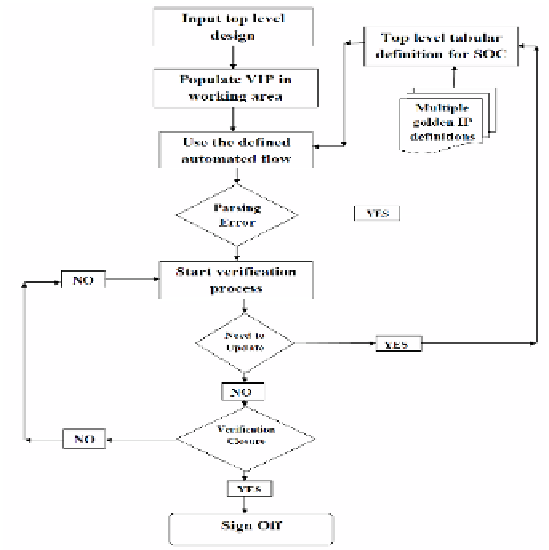Information Technology Reference
In-Depth Information
Fig. 2.
Flow at SoC Level
This completes the information which is needed from the user side. Based on the
above information given, tool will deliver a fully functional UVM based testbench.
Flow and working of tool:
Given the name of VIP, first it will look whether it is existing or non-existing. For
existing ones, the tool will populate it from the central repository otherwise it will
create complete VIP based on UVM which includes transaction item, sequence,
sequencer, driver, monitor and agent. Now all the VIP blocks which were defined are
in working area along with the top level design. The VIP instances will be
automatically connected to DUT based on the tabular information specified.
The interface definition using
uvm_config_db::set
will also be done so that
lower level verification components will automatically get access to interface using
uvm_config_db::get
operation. Now the Environment class will be created which will
instantiate different agents, build and connect them. Also tool has different sequences
for each VIP which completes the requirement for creating a top level testbench class.
Finally a UVM based testbench will be developed which will inherit environment and
different sequence class. Different components will be built, configuration of
VIP will be done and sequences will start on respective sequencer in run phase.
Based on simulator choice, testbench will be simulated with proper command line
arguments.

